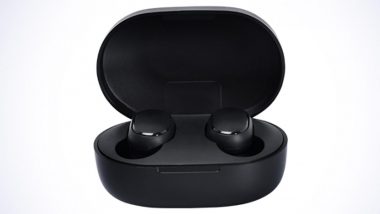Washington , January 10: A study led by the researchers of the Institut de recherche en Sante et securite du travail (IRSST) and the Ecole de Technologie Superieure (ETS University) examined the association of structure of ear canals to the different commonly-used models of earplugs.
Noise exposure accounts for 22 per cent of worldwide work-related health problems. Excessive noise not only causes hearing loss and tinnitus but also increases the risk of cardiovascular diseases. To provide protection, workers normally wear earplugs. However, commonly available earplugs are often uncomfortable, since they don't fit everyone's ears equally well. Hearing Loss Can Contribute to Mental Decline, Dementia: Experts.
How could we improve the comfort and effectiveness of these earplugs? What aspects of the ear canal must be taken into account? To answer these questions, a team of researchers analysed the commonly used earplugs. Just like fingerprints, ear canals are unique. So, to find the best compromise between comfort and efficiency, you need to understand the relationship between the shapes of ear canals and of earplugs.
Earplugs must not only fit properly inside the ear canal but must also exert pressure against the walls of the canal in order to make a tight seal. However, if the plugs put too much pressure on the ear canal walls, they will cause the wearer pain.
To study these aspects, 3D models of volunteer workers' ear canals were created. These people wore three different types of earplugs. To obtain the geometry of their ear canals, a moulding material was injected to create canal moulds. These moulds were then scanned by measurement software to establish the geometric characteristics of the ear canal, such as the width at various locations and the overall length.
The noise attenuation of the three models of earplugs was then measured for each volunteer. Two miniature microphones were installed in and around the plugs to measure the noise outside and inside the earplug. Statistical analysis as well as algorithms based on artificial intelligence helped categorise the morphology of ear canals as a function of the degree of noise mitigation of each earplug.
The results of the study show that the area of the ear canal called the "first elbow" is closely linked to noise attenuation by earplugs. Groups of similar structures created using artificial intelligence will allow researchers to develop a multitude of tools for manufacturers, who will then be able to produce a range of more comfortable earplugs. This will allow prevention professionals to suggest models suited to each worker's ear canals.
(The above story is verified and authored by ANI staff, ANI is South Asia's leading multimedia news agency with over 100 bureaus in India, South Asia and across the globe. ANI brings the latest news on Politics and Current Affairs in India & around the World, Sports, Health, Fitness, Entertainment, & News. The views appearing in the above post do not reflect the opinions of LatestLY)













 Quickly
Quickly


